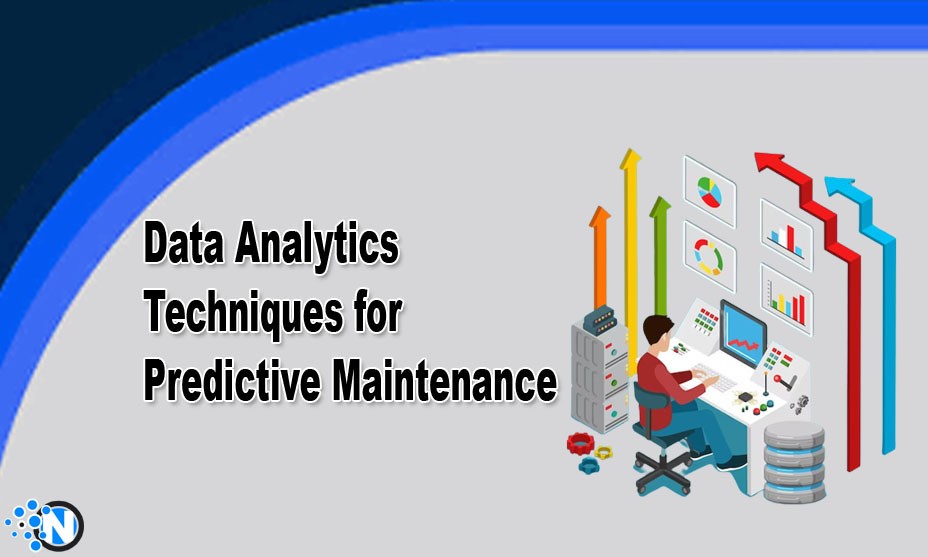8 Data Analytics Techniques for Predictive Maintenance
Using data analytics and machine learning procedures for predictive maintenance has enabled industries to tackle difficult tasks comprehensively and efficiently. So much pressure on the equipment to generate the products or carry out other activities rapidly has made them vulnerable to faults and errors. Consequently, you will suffer from a great loss. You can predict where to make changes for smooth and seamless working using historical data and real-time performance. In this guide, we will look forward to the top 8 data analytics techniques for predictive maintenance.
What is Predictive Maintenance?
Generally, Predictive Maintenance refers to analyzing the working equipment in advance to determine when a potential maintenance procedure is needed. Leveraging this technique, you can take preventive measures at the right time, saving time and budget. Moreover, you will be able to perform all the necessary activities without any pause, taking your work experience to an advanced level. Further, you can use data analytics techniques to check the machine’s performance time and previous working status. It helps you more effectively to take the right maintenance steps.
8 Data Analytics Techniques for Predictive Maintenance
Before heading toward the techniques, let’s understand what Data Analytics is. It is basically extracting, inspecting, and analyzing the data to take out the necessary steps. For example, in marketing, data analytics refers to getting the details about customers’ purchase history to determine their interests.
On the other hand, if you are looking to integrate data analytics for predictive maintenance, it refers to extracting the machines’ or equipment’s information to determine which step you should take to prevent them from getting damaged or stopping working. In the under section, we have listed the top 8 data analytics techniques you can adopt for predictive maintenance of your business gadgets and tools.
1 – Collect the Basic Data
Firstly, you must collect all the basic data about a particular machine from all possible sources. Head on to the company to find the relevant details regarding the manufacturing status, components quality, and other aspects. Additionally, you can check your record books and equipment logs to check the device status when it comes to your industry. Besides, you can leverage help from the sensors to check which part is functioning abnormally. Hence, you will get insights into the potential errors.
2 – Monitor the Condition
Secondly, you should monitor the condition of a particular piece of equipment to decide which of its components may cause the threat. Assess different parameters, like temperature, vibration, pressure, noise, and other physical signs. If the device produces more sound than normal, there must be a fault in its bearings or any other sliding parts. While more vibration leads you to check its base and standing pads. Similarly, you can check the cords if the temperature is raised above the normal level. However, you must match them with the basic data to predict the severity of the fault.
3 – Recognize the Failure Pattern
Now you have learned about the faulty part and errors in its functioning, move forward to recognize the anomalies in its operational capabilities. Furthermore, get the data about that specific machine’s previous maintenance records, if any. As a result, you can unveil the common failure modes and patterns and follow the proper steps to move forward in the correct direction. In addition, you can use these failure patterns to predict the timeframe and schedule for predictive maintenance.
4 – Predictive Modeling

In the previous section, we discussed recognizing the failure patterns in the device’s functioning. You can use the previous maintenance data to design the maintenance model so that the developers and management team can follow the pre-formed predictive modeling criteria to eliminate the faults. Besides, Artificial Intelligence and machine-learning procedures have paved the route to special algorithms. Leveraging these, you can take proactive measures to deal with critical errors and make predictions.
5 – Integrate Sensors
AI and machine-learning algorithms have also allowed the production of exclusive sensors that help you incredibly with predictive maintenance. You can install these sensors in the devices to analyze the functioning of internal components. In addition, you can integrate these sensors with data analytics tools to see how much the performance spikes show anomalies. The rise and fall in the sensors’ curves will feature the current performance, and you can compare them with the normal ones.
6 – Leverage IoT and Big Data
The Internet of Things and big data technology also boosts data analytics strategies to play a vital role in predictive maintenance. You can continuously collect the data and collect them in a centralized space where you can predict the changes and set the maintenance schedule in real time. By collecting, processing, and storing the data, you will not only schedule the maintenance schedule but also predict the future patterns
7 – Use Alert System
Next, you must integrate your devices and equipment with alert systems for predictive maintenance. With such systems, you will get to know about the time when the previous errors happened. Thus, you can adopt maintenance measures readily and set up the timeframe to carry out the vital procedures. It helps you save money as well as time to offer seamless functioning.
8 – Implement CMMS
CMMS stands for computerized maintenance management systems. You can install this software on your computer and integrate the machines to monitor their performance and health status 24/7. In this way, it enables you to determine the period when you should consider implementing management procedures.
Final Verdicts
All these are the details about the top 8 best data analytics techniques for predictive maintenance. In conclusion, the increased marketing competition has put enormous pressure on companies and industries to speed up their tasks and capture the market more efficiently. Ultimately, it has made the equipment vulnerable to faults and other potential errors, making you suffer a great loss in credibility and revenue. However, you can follow maintenance techniques by quickly analyzing the data and predicting anomalies. That’s all about this guide. Stay tuned for more information!





